#it's just not sustainable!!
Text


#troglodyte thoughts#free range sustainable shitpost#anti doomscroll patrol#fuck advertisers#fuck youth worship#you’re just getting started sweetie#there’s so much plot left to uncover
114K notes
·
View notes
Text


leashes for zosan
#one piece#zoro#sanji#zosan#nico robin#usopp#ive had this comic sketched for… probably months. but i finally lined and finished it!!#eesh… three comics in three days… this rate is NOT sustainable#im just incapable of not thinking about one piece dkfkdkkckdkc#i normally dont draw at all nov-feb bc i feel unmotivated and sad but hey!! not this year!! skckdkckdkkcdk#anyway i have the nonblurry zoro. featuring more of his uhhh body. but thats not going up here any time soon
10K notes
·
View notes
Text
this might be a hot take but i actually don’t think humans were meant to know what is going on in everyone’s lives all over the world every second of the day and constantly be available for conversations or collaborations or call-ins for work and texts and phone calls and social media posts without end. i think we were supposed to just help the people around us and spend time with our family and friends and eat yummy bread and berries and relax
#‘did you know x celebrity did this thing and now they’re getting cancelled?’ no. why does that concern me#idgaf about celebrities#and like. mental exhaustion and guilt are not good or sustainable substitutions for real help and activism#sometimes it’s ok to just. unplug and worry about your own life#im not saying you should stop caring but you also shouldn’t guilt yourself to death over something you have zero control over#text post#top posts#5k#20k#30k#40k#50k#60k#70k
72K notes
·
View notes
Text
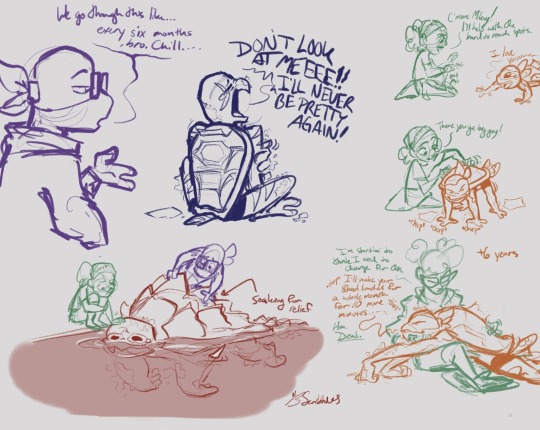



Turtles shed the plates (scutes) on their shell and their skin when going through growth spurts. Can’t be comfy…luckily April’s got them covered💛
#rottmnt#rise of the teenage mutant ninja turtles#rise of the tmnt#tmnt#tmnt 2018#I love hcs where theyre just acting like turtles sm#more squishy fluffiness#it sustains me
11K notes
·
View notes
Text

Scritch
#fnaf#moondrop#fnaf ruin#fnaf ruin dlc#fnaf ruin spoilers#?#scritch#I’m not that flexible I would just fall over#I sustained an injury#fablesketches
4K notes
·
View notes
Text



All my rejanis art as of late as I finish up commissions!
#someone also draw them please I can’t sustain the demand by myself I’m just one they/them#my art#fanart#wlw art#mean girls fanart#mean girls#lizzy caplan#rachel mcadams#regina george#mean girls 2004#rejanis#janis ian#Janice Ian#Regina x Janis#Regina x Janice#cady heron#Karen smith#gretchen weiners
3K notes
·
View notes
Text


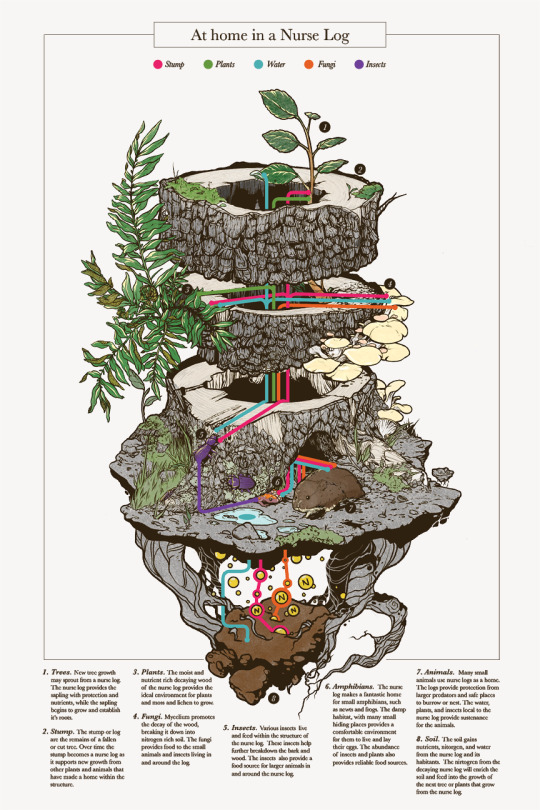




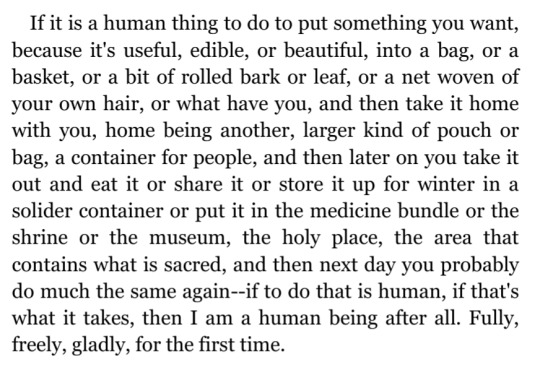
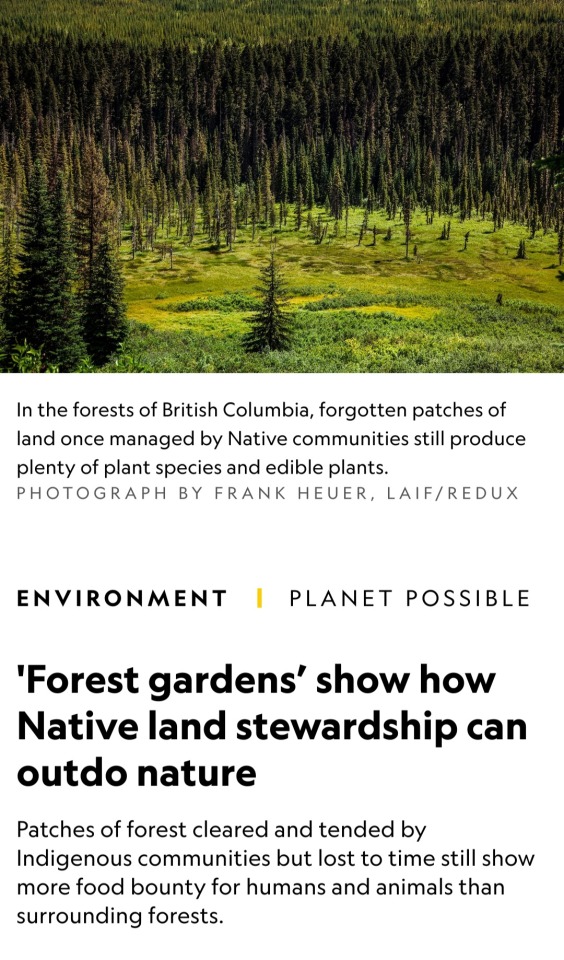




times, places, and practices that I want to learn from to imagine a hopeful future for humanity 🍃
the three sisters (squash, beans, maize) stock photo - alamy // anecdote by Ira Byock about Margaret Mead // art by Amanda Key // always coming home by Ursula K. Le Guin // Yup'ik basket weaver Lucille Westlock photographed by John Rowley // the left hand of darkness by Ursula K. Le Guin // photo by Jacob Klassen // the carrier bag theory of fiction by Ursula K. Le Guin // article in national geographic // the dawn of everything by David Graeber and David Wengrow // braiding sweetgrass by Robin Wall Kimmerer // the birchbark house by Louise Erdrich // photo by John Noltner
I'm looking for more content and book recs in this vein, so please send them my way!
#solarpunk#hopepunk#braiding sweetgrass#just a collection of books and pictures that make me hopeful for the future#margaret mead#robin wall kimmerer#nature#ursula k le guin#ursula k. le guin#the left hand of darkness#the carrier bag theory of fiction#the dawn of everything#anthropology#future#hopecore#native plants#biodiversity#sustainability#eco#eco friendly#louise erdrich#civilization
2K notes
·
View notes
Text
they probably haven't said anything because the response video still needs some animations and some edits
#watcher#not to be a bitch but ajshjksjsh#just. the more i think about all the more of a terrible idea this was#and look i'm making fun of them but i genuinely hope they understand why this is not going well#and im gonna say it again. i dont think they are evil capitalistic monsters#i think they are creatives shooting for the stars in terms of their content with no idea how to sustain that#and how they are (not) handling this shows that unfortunately#my post
651 notes
·
View notes
Text





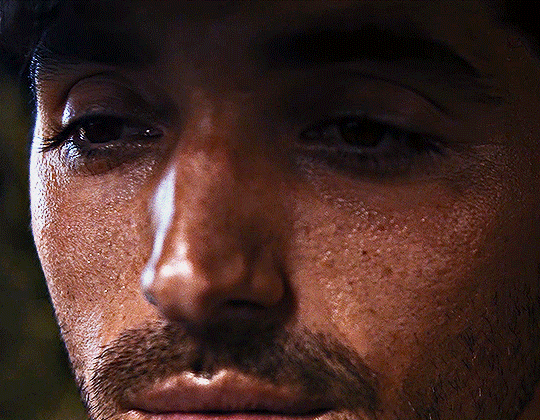


TAYLOR ZAKHAR PEREZ
Natural Diamonds
#taylor zakhar perez#tzpedit#rwrb cast#rwrbsource#usernuria#usersteen#userninz#userveronika#usermegsb#mine*#.............................#what.#what am i supposed to do with all of this#im just a person#seriously it should be illegal to be this good looking#its not a joke anymore this is my life#wdym he just out here with a cowboy hat riding a horse 😭😭😭#ugh good for him#even tho this is purely a thirst gifset you should actually read his interview#the way he talks about sustainability and how he wants to be represented on screen is beautiful <3
1K notes
·
View notes
Note
I love how you draw Grim the size of a small cat. It genuinely blows my mind that according to the game he's actually approximately 70 cm tall... Like, Ortho is 148 cm. That's only two Grims! If Grim stands on Ortho's head, they'd be just a bit taller than Malleus (who is 202 cm and I'm not sure that's counting the horns)! The proportions are just so wild to try to imagine realistically... (and I do like the small cat Grim take more, it's very endearing)
every time I remember Grim is actually supposed to be the size of, like, a medium-to-largeish dog, and then I just...draw him cat-sized anyway. I also think it's cuter that way! 🤷 (let's just say he's not allowed to ride the servant unless he takes the shrinking potion first.)
ultimately I figure we all get a little artistic license in our fanart, and mine are:
cat-sized Grim
Lilia with hair spikes up to the heavens
w i d e Silver
#twisted wonderland#as far as i can tell this is not a furret situation and that 70cm does not include his tail#grim's just a big boy#a big boy who needs big helpings of tuna to sustain his giant head#(waiting for him to pull a persona and crack open to reveal a handsome anime man underneath)#i do like wide/buff silver too even though i know that isn't really canon#(i'll argue for buff sebek but silver i think is supposed to be more wiry/people are constantly surprised by how strong he is anyway)#i just...like the contrast of Two Big Guards for lilia the excitable twig and malleus the long wet drip of a man#and as long as jack remains the widest in the land i figure it all evens out somehow#(if i remember right malleus' height does include the horns) (and i think jack's includes his ears and hair which is even funnier somehow)#(i have seen some attempts to figure it out but i don't think there's ever been an official answer on height without their sticky-up bits)#(looking at the height chart mal looks about the same height as the twins and jack very slightly shorter. but that's just eyeballing it)#(don't ask how the 1cm difference between jade and floyd factors in i don't know)
446 notes
·
View notes
Text
not to start whacking the hornet’s nest but i think the most tragic part of ahsoka and anakin’s story together is that from the very first moment, it’s all based on a lie.
ahsoka meets anakin after aotc - he’s already committed an unjustifiable atrocity. he’s already slaughtered the tusken people, and as far as we know, ahsoka never finds out about that. and you know, that would completely and wildly screw up ahsoka’s perceptions of anakin
and i would go so far as to say it would screw with her image of anakin more than the vader reveal. because the vader reveal is like. oh shit your older brother/ best friend has turned into a monster and has committed genocide and is currently trying to kill you
but the tusken massacre reveal is like. oh shit your older brother who tucks you in bed when you’re sick and who makes you laugh so hard your ribs hurt has, for the entire time he’s loved you and you loved in return, been a murderer, and has actively been hiding a horrible, unjustifiable secret
the vader reveal is tragic because the anakin that ahsoka knows and remembers is, to her knowledge, gone forever. the tusken massacre reveal is tragic because the anakin that ahsoka knows and loves is based on a lie
#anakin skywalker#ahsoka tano#star wars the clone wars#the clone wars#not that the anakin ahsoka adores isn’t there. he is. but he’s also the same man as the desert killer. the same man as the jedi killer#one and the same. he loves her and he’s killed and he’ll love her until he kills her#I JUST THINK it would mess her up more than the vader reveal. i don’t know how she’d cope#how do you cope with the knowledge that (to you) all your good bits are from a killer. how do you reconcile your goodness with his#ahsoka is the best parts of anakin. its what sustains her during the fulcrum years. he lives on in her#how do you cope with that?#yooo if anyone is curious i HAVE posted the fic about this (:
10K notes
·
View notes
Text
On the outskirts of Gotham a farm is made.
No one can pinpoint when it was started but it was clearly bountiful.
New orchards of plums apples and several other fruit whisper promises of fruits in the years to come.
Bee houses buzzed with life and ducks quacked and scurried to and from their pond, coop and the garden.
Vegetables by the rows with seasonal berries brushes spring up at the corners of the property.
Greenery that almost seemed to glow with how lush it was.
It was like a small oasis in the desert of Gotham’s dirty land.
And it was ran by only three people.
The woman’s name was Sam. She was known as an activist who seemed to do the primary care of the plants. The property was in her name and she went out of her way to invite people to take what they need.
Danny was the most well known of the trio. He brought the produce into the heart of the city. Anywhere that would take the food, kitchens, pantries, school cafeterias even people’s doorsteps.
Tucker was the technical mastermind, hidden but equally important. The sprinklers, planning of the pollination rotation, harvesting planning and statistics were his main focus on the farm. Not a single square inch of the the land was not under his watchful gaze.
All the food was fresh or properly stored and most interesting of all free.
Of course people were going to talk.
#dp x dc#writing prompt#danny fenton#danny phantom#sam manson#tucker foley#so basically#the trio play stardew valley irl#grandma Ida as soon as Sam turned 18: happy birthday I got you something something#they just want to love their best life#platonic or romantic#everlasting trio#I think that’s the right tag for that ship#in my mind it’s platonic but having a sustainable farm with your two partners is honestly goals AF#the ducks are so they don’t have to use pesticides 🥰
2K notes
·
View notes
Text
whump fic where whumpee is being held captive by whumper and continually tries to escape to find where caretaker is being held so they can get out of here together, but as the story progresses it becomes more clear that whumpee is a victim of stockholm syndrome/brainwashing by "caretaker" and is actually being rehabilitated by "whumper" after being rescued, not kidnapped
#whumpee thinks whumper is torturing them but in reality theyre trying to treat old wounds they dont even remember sustaining#fights against being drugged but actually they're experiencing withdrawal symptoms after whumper flushed out their system#whumper making threats that whumpee will never see caretaker again but its not a threat its supposed to be a calm reassurance#the slow slow burn of whumpee realizing just how fucked their situation is and having to face that reality#whump#whump community#whump scenario#whumpee#whumper#whump ideas#implied whump#whump writing#whump prompt#whumpblr#defiant whumpee#caretaker#bad caretaker#carewhumper
461 notes
·
View notes
Text
hey so friendly reminder

stede gives *full body* kisses
#I love it when actors just go full-body like that#because yes kisses with LOTS OF SPACE in between is a thing that happens!#but they're not the *only* kind#and there is a *very particular message* about a full-body one#especially on screen#and that message is#'somebody said we must live in two separate bodies - but my skin says it misses you -#and my blood remembers when it ran through both our veins -#and every part of me just wants to prove a motherfucker wrong - so let's kiss#and kiss -#until our bodies become one again -#and we can finally take a full deep breath of air#instead of the lonely half-measures that sustained us#for all the years it took to find our other halves again#(...which tbh is kind of a lot for one man's hip-to-hip full-dick action kiss to accomplish but like. I calls it like I sees it)#our flag means death#our flag means death s2 spoilers
905 notes
·
View notes
Text
The Real Cost of the Fashion Industry

Atacama Desert, in Alto Hospicio, Iquique, Chile. (source)
The textile industry is destroying the world. The industry is wasting massive amounts of energy and materials, and polluting the air, the ground and the water supplies. It overwhelmingly exploits it's labour and extracts wealth from colonized countries, especially in Asia. I assume we all broadly understand this, but I think it's useful to have it all laid out in front of you to see the big picture, the core issues causing this destruction and find ways how to effectively move forward.
The concerning trend behind this ever-increasing devastation are shortening of trend cycles, lowering clothing prices and massive amount of wasted products. Still in year 2000 it was common for fashion brands to have two collections per year, while now e.g. Zara produces 24 collections and H&M produces 12-16 collections per year. Clothing prices have fallen (at leas in EU) 30% from 1996 to 2018 when adjusted to inflation, which has contributed to the 40% increase in clothing consumption per person between 1996 and 2012 (in EU). (source) As the revenue made by the clothing industry keep rising - from 2017 to 2021 they doubled (source) - falling prices can only be achieved with increasing worker exploitation and decreasing quality. I think the 36% degrees times clothing are used in average during the last 15 years (source) is a clear indication on the continuing drop in quality of clothing. Clothing production doubled between 2000 and 2015, while 30% of the clothes produced per year are never sold and are often burned instead (source), presumably to prevent the returns from falling due to oversupply.
These all factors are driving people to overconsume. While people in EU keep buying more clothes, they haven't used up to 50% of the clothes in their wardrobe for over a year (source). This overconsumption is only made much worse by the new type of hyper fast fashion companies like SHEIN and Temu, which are using addictive psychological tactics developed by social media companies (source 1, source 2). They are cranking up all those concerning trends I mentioned above.
Under the cut I will go through the statistics of the most significant effects of the industry on environment and people. I will warn you it will be bleak. This is not just a fast fashion problem, basically the whole industry is engaging in destructive practices leading to this damage. Clothing is one of those things that would be actually relatively easy to make without massive environmental and human cost, so while that makes the current state of the industry even more heinous, it also means there's hope and it's possible to fix things. In the end, I will be giving some suggestions for actions we could be doing right now to unfuck this mess.
Carbon emissions
The textile industry is responsible for roughly 10% of the global CO2 emissions, more than aviation and shipping industry combined. This is due to the massive supply chains and energy intensive production methods of fabrics. Most of it can be contributed to the fashion sector since around 60% of all the textile production is clothing. Polyester, a synthetic fiber made from oil which accounts for more than half of the fibers used in the textile industry, produces double the amount of carbon emissions than cotton, accounting for very large proportions of all the emissions by the industry. (source 1, source 2)
Worker exploitation
Majority of the textiles are produced in Asia. Some of the worst working conditions are in Bangladesh, one of the most important garment producers, and Pakistan. Here's an excerpt from EU Parliament's briefing document from 2014 after the catastrophic Rana Plaza disaster:
The customers of garment producers are most often global brands looking for low prices and tight production timeframes. They also make changes to product design, product volume, and production timeframes, and place last-minute orders without accepting increased costs or adjustments to delivery dates. The stresses of such policies usually fall on factory workers.
The wage exploitation is bleak. According to the 2015 documentary The True Cost less than 2% of all garment factory workers earned a living wage (source). Hourly wages are so low and the daily quotas so high, garment workers are often forced through conditions or threats and demand to work extra hours, which regularly leads to 10-12 hour work days (source) and at worst 16 hour workdays (source), often without days off. Sometimes factories won't compensate for extra hours, breaching regulations (source).
Long working hours, repetitive work, lack of breaks and high pressure leads to increased risks of injuries and accidents. Small and even major injuries are extremely common in the industry. A study in three factories in India found that 70% of the workers suffered from musculosceletal symptoms (source). Another qualitative study of female garment workers and factory doctors in Dhaka found that long hours led to eye strain, headaches, fatigue and weight loss in addition to muscular and back pains. According to the doctors interviewed, weight loss was common because the workers work such long hours without breaks, they didn't have enough time to eat properly. (source) Another study in 8 factories in India found that minor injuries were extremely common and caused by unergonomic work stations, poor organization in the work place and lack of safety gear, guidelines and training (source). Safety precautions too are often overlooked to cut corners, which periodically leads to factory accidents, like in 2023 lack of fire exists and fire extinguishers, and goods stacked beyond capacity led to a factory fire in Pakistan which injured dozens of workers (source) or like in 2022 dangerous factory site led to one dead worker and 9 injured workers (source).
Rana Plaza collapse in 2013 is the worst industrial accident in recent history. The factory building did not have proper permits and the factory owner blatantly ignored signs of danger (other businesses abandoned the building a day before the collapse), which led to deaths of 1 134 workers and injuries to 2 500 workers. The factory had or were at the time working for orders of at least Prada, Versace, Primark, Walmart, Zara, H&M, C&A, Mango, Benetton, the Children's Place, El Corte Inglés, Joe Fresh, Carrefour, Auchan, KiK, Loblaw, Bonmarche and Matalan. None of the brands were held legally accountable for the unsafe working conditions which they profited off of. Only 9 of the brands attended a meeting to agree on compensation for the victim's families. Walmart, Carrefour, Auchan, Mango and KiK refused to sight the agreement, it was only signed by Primark, Loblaw, Bonmarche and El Corte Ingles. The compension these companies provided was laughable though. Primemark demanded DNA evidence that they are relatives of one of the victims from these struggling families who had lost their often sole breadwinner for a meager sum of 200 USD (which doesn't even count for two months of living wage in Bangladesh (source)). This obviously proved to be extremely difficult for most families even though US government agreed to donate DNA kits. This is often said to be a turning point in working conditions in the industry, at least in Bangladesh, but while there's more oversight now, as we have seen, there's clearly still massive issues. (source 1, source 2)
One last major concern of working conditions in the industry I will mention is the Xinjiang raw cotton production, which is likely produced mainly with forced labour from Uighur concentration camps, aka slave labour of a suspected genocide. 90% of China's raw cotton production comes from Xinjiang (source). China is the second largest cotton producer in the world, after India, accounting 20% of the yearly global cotton production (source).
Pollution
Synthetic dyes, which synthetic fibers require, are the main cause of water pollution caused by the textile industry, which is estimated to account for 20% of global clean water pollution (source). This water pollution by the textile industry is suspected of causing a lot of health issues like digestive issues in the short term, and allergies, dermatitis, skin inflammation, tumors and human mutations in the long term. Toxins also effect fish and aquatic bacteria. Azo dyes, one of the major pollutants, can cause detrimental effects to aquatic ecosystems by decreasing photosynthetic activity of algae. Synthetic dyes and heavy metals also cause large amounts of soil pollution. Large amounts of heavy metals in soil, which occurs around factories that don't take proper environmental procautions, can cause anaemia, kidney failure, and cortical edoem in humans. That also causes changes in soil texture, decrease in soil microbial diversity and plant health, and changes in genetic structure of organisms growing in the soil. Textile factory waste water has been used for irrigation in Turkey, where other sources of water have been lacking, causing significant damage to the soil. (source)
Rayon produced through viscose process causes significant carbon disulphide and hydrogen sulphide pollution to the environment. CS2 causes cardiovascular, psychiatric, neuropsychological, endocrinal and reproductive disorders. Abortion rates among workers and their partners exposed to CS2 are reported to be significantly higher than in control groups. Many times higher amounts of sick days are reported for workers in spinning rooms of viscose fiber factories. China and India are largest producers of CS2 pollution, accounting respectively 65.74% and 11,11% of the global pollution, since they are also the major viscose producers. Emission of CS2 has increased significantly in India from 26.8 Gg in 2001 to 78.32 Gg in 2020. (source)
Waste
The textile industry is estimated to produce around 92 million tons of textile waste per year. As said before around 30% of the production is never sold and with shortening lifespans used the amount of used clothing that goes to waster is only increasing. This waste is large burned or thrown into landfills in poor countries. (source) H&M was accused in 2017 by investigative journalists of burning up to 12 tonnes of clothes per year themselves, including usable clothing, which they denied claiming they donated clothing they couldn't sell to charity instead (source). Most of the clothing donated to charity though is burned or dumbed to landfills (source).
Most of the waste clothing from rich countries like European countries, US, Australia and Canada are shipped to Chile (source) or African countries, mostly Ghana, but also Burkina Faso and Côte d'Ivoire (source). There's major second-hand fashion industries in these places, but most of the charity clothing is dumbed to landfills, because they are in such bad condition or the quality is too poor. Burning and filling landfills with synthetic fabrics with synthetic dyes causes major air, water and soil pollution. The second-hand clothing industry also suppresses any local clothing production as donated clothing is inherently more competitive than anything else, making these places economically reliant on dumbed clothing, which is destroying their environment and health, and prevents them from creating a more sustainable economy that would befit them more locally. This is not an accident, but required part of the clothing industry. Overproduction let's these companies tap on every new trend quickly, while not letting clothing the prices in rich countries drop so low it would hurt their profits. Production is cheaper than missing a trend.
Micro- and nanoplastics
There is massive amounts of micro- and nanoplastics in all of our environment. It's in our food, drinking water, even sea salt (source). Washing synthetic textiles accounts for roughly 35% of all microplastics released to the environment. It's estimated that it has caused 14 million tonnes of microplastics to accumulate into the bottom of the ocean. (source)
Microplastics build up into the intestines of animals (including humans), and have shown to probably cause cause DNA damage and altered organism behavior in aquatic fauna. Microplastics also contain a lot of the usual pollutants from textile industry like synthetic dyes and heavy metals, which absorb in higher quantities to tissues of animals through microplastics in the intestines. Studies have shown that the adverse effect are higher the longer the microplastics stay in the organism. The effects cause major risks to aquatic biodiversity. (source) The health effects of microplastics to humans are not well known, but studies have shown that they could have adverse effects on digestive, respiratory, endocrine, reproductive and immune systems. (source)
Microplastics degrade in the environment even further to nanoplastics. Nanoplastic being even smaller are found to enter blood circulation, get inside cells and cross the blood-brain barrier. In fishes they have been found to cause neurological damage. Nanoplastics are also in the air, and humans frequently breath them in. Study in office buildings found higher concentration of nanoplastics in indoor air than outdoor air. Inside the nanoplastics are likely caused mostly by synthetic household textiles, and outdoors mostly by car tires. (source) An association between nanoplastics and mitochondrial damage in human respiratory cells was found in a recent study. (source)
Micro and nano plastics are also extremely hard to remove from the environment, making it even more important that we reduce the amount of microplastics we produce as fast as possible.
What can we do?
This is a question that deserves it's own essays and articles written about it, but I will leave you with some action points. Reading about these very bleak realities can easily lead to overwhelming apathy, but we need to channel these horrors into actions. Whatever you do, do not fall into apathy. We don't have the luxury for that, we need to act. These are industry wide problems, that simply cannot be fixed by consumerism. Do not trust any clothing companies, even those who market themselves as ethical and responsible, always assume they are lying. Most of them are, even the so called "good ones". We need legislation. We cannot allow the industry to regulate itself, they will always take the easy way out and lie to their graves. I will for sure write more in dept about what we can do, but for now here's some actions to take, both political and individual ones.
Political actions
Let's start with political actions, since they will be the much more important ones. While we are trying to dismantle capitalism and neocolonialism (the roots of these issues), here's some things that we could do right now. These will be policies that we should be doing everywhere in the world, but especially rich countries, where most of the clothing consumption is taking place. Vote, speak to others, write to your representative, write opinion pieces to your local papers, engage with democracy.
Higher requirements of transparency. Right now product transparency in clothing is laughably low. In EU only the material make up and the origin country of the final product are required to be disclosed. Everything else is up to the company. Mandatory transparency is the only way we can force any positive changes in the production. The minimum of transparency should be: origin countries of the fibers and textiles in the product itself; mandatory reports of the lifecycle emissions; mandatory reports of whole chain of production. Right now the clothing companies make their chain of production intentionally complex, so they have plausible deniability when inevitably they are caught violating environmental or worker protection laws (source). They intentionally don't want to be able to track down their production chain. Forcing them to do so anyway would make it very expensive for them to keep up this unnecessarily complex production chain. These laws are most effective when put in place in large economies like EU or US.
Restrictions on the use of synthetic fibers. Honestly I think they should be banned entirely, since the amount of microplastics in our environment is already extremely distressing and the other environmental effects of synthetic fibers are also massive, but I know there are functions for which they are not easily replaced (though I think they can be replaces in those too, but that's a subject of another post), so we should start with restrictions. I'm not sure how they should be specifically made, I'm not a law expert, but they shouldn't be used in everyday textiles, where there are very easy and obvious other options.
Banning viscose. There are much better options for viscose method that don't cause massive health issues and environmental destruction where ever it's made, like Lyocell. There is absolutely no reason why viscose should be allowed to be sold anywhere.
Governmental support for local production by local businesses. Most of the issues could be much more easily solved and monitored if most clothing were not produced by massive global conglomerations, but rather by local businesses that produce locally. All clothing are made by hand, so centralizing production doesn't even give it advantage in effectiveness (only more profits for the few). Producing locally would make it much more easier to enforce regulations and it would reduce production chains, making production more effective, leaving more profits into the hands of the workers and reducing emissions from transportation. When the production is done by local businesses, the profits would stay in the producing country and they could be taxed and utilized to help the local communities. This would be helpful to do in both exploited and exploiter countries. When done in rich countries who exploit poorer ones, it would reduce the demand for exploitation. In poor countries this is not as easily done, since poor means they don't have money to give around, but maybe this could be a good cause to put some reparations from colonizers and global corporations, which they should pay.
Preventing strategic accounting between subsidiaries and parent companies. Corporate law is obviously not my area of expertise, but I know that allowing corporations to move around the accounting of profits and losses between subsidiaries and parent companies in roughly 1980s, was a major factor in creating this modern global capitalist system, where corporations can very easily manipulate their accounting to utilize tax heavens and avoid taxes where they actually operate, which is how they are upholding this terrible system and extracting the profits from the production countries. How specifically this would be done I can't tell because again I know shit about corporate law, so experts of that field should plan the specifics. Overall this would help deal with a lot of other problems than just the fashion industry. Again for it to be effective a large economic area like EU or US should do this.
Holding companies accountable for their whole chain of production. These companies should be dragged to court and made to answer for the crimes they are profiting of off. We should put fear back into them. This is possible. Victims of child slavery are already doing this for chocolate companies. If it's already not how law works everywhere, the laws should be changed so that the companies are responsible even if they didn't know, because it's their responsibility to find out and make sure they know. They should have been held accountable for the Rana Plaza disaster. Maybe they still could be. Sue the mother fuckers. They should be afraid of us.
Individual actions
I will stress that the previous section is much more important and that there's no need to feel guilty for individual actions. This is not the fault of the average consumer. Still we do need to change our relationship to fashion and consumption. While it's not our fault, one of the ways this system is perpetuated, is by the consumerist propaganda by fashion industry. And it is easier to change our own habits than to change the industry, even if our own habits have little impact. So these are quite easy things we all could do as we are trying to do bigger change to gain some sense of control and keep us from falling to apathy.
Consume less. Better consumption will not save us, since consumption itself is the problem. We consume too much clothing. Don't make impulse purchases. Consider carefully weather you actually need something or if you really really want it. Even only buying second-hand still fuels the industry, so while it's better than buying new, it's still better to not buy.
Take proper care of your clothing. Learn how to properly wash your clothing. There's a lot of internet resources for that. Never wash your wool textiles in washing machine, even if the textile's official instructions allow it. Instead air them regularly, rinse them in cool water if they still smell after airing and wash stains with water or small amount of (wool) detergent. Never use fabric softener! It damages the fabrics, prevents them from properly getting clean and is environmentally damaging. Instead use laundry vinegar for making textiles softer or removing bad smells. (You can easily make laundry vinegar yourself too from white vinegar and water (and essential oils, if you want to add a scent to it) which is much cheaper.) Learn how to take care of your leather products. Most leather can be kept in very good condition for a very long time by occasional waxing with beeswax.
Use the services of dressmakers and shoemakers. Take your broken clothing or clothing which doesn't fit anymore to your local dressmaker and ask them if they can do something about it. Take your broken and worn leather products to your local shoemaker too. Usually it doesn't cost much to get something fixed or refitted and these expert usually have ways to fix things you couldn't even think of. So even if the situation with your clothing or accessory seems desperate, still show it to the dressmaker or shoemaker.
If it's extremely cheap, don't buy it. Remember that every clothing is handmade. Only a small fraction of the cost of the clothing will be paying the wages of the person who made it with their hands. If a shirt costs 5 euros (c. 5,39 USD), it's sewer was only payed mere cents for sewing it. I'm not a quick sewer and it takes me roughly 1-2 hours to cut, prepare and sew a simple shirt, so I'm guessing it would take around half an hour to do all that for a factory worker on a crunch, at the very least 15 minutes. So the hourly pay would still be ridiculously low. However, as I said before, the fact that the workers in clothing factories get criminally low pay is not the fault of the consumer, so if you need a clothing item, and you don't have money to buy anything else than something very cheep, don't feel guilty. And anyway expensive clothing in no way necessarily means reasonable pay or ethical working conditions, cheep clothing just guarantee them.
Learn to recognize higher quality. In addition to exploitation, low price also means low quality, but again high price doesn't guarantee high quality. High quality allows you to buy less, so even if it's not as cheep as low quality, if you can afford it, when you need it, it will be cheaper in long run, and allows you to consume less. Check the materials. Natural fibers are your friends. Do not buy plastic, if it's possible to avoid. Avoid household textiles from synthetic fibers. Avoid textiles with small amounts of spandex to give it stretch, it will shorten the lifespan of the clothing significantly as the spandex quickly wears down and the clothing looses it's shape. Also avoid clothing with rubber bands. They also loose their elasticity very quickly. In some types of clothing (sport wear, underwear) these are basically impossible to avoid, but in many other cases it's entirely possible.
Buy from artisans and local producers, if you can. As said better consumption won't fix this, but supporting artisans and your local producers could help keep them afloat, which in small ways helps create an alternative to the exploitative global corporations. With artisans especially you know the money goes to the one who did the labour and buying locally means less middlemen to take their cut. More generally buy rather from businesses that are located to the same country where the production is, even if it's not local to you. A local business doesn't necessarily produce locally.
Develop your own taste. If you care about fashion and style, it's easy to fall victim to the fashion industry's marketing and trend cycles. That's why I think it's important to develop your personal sense of style and preferences. Pay attention at what type of clothes are comfortable to you. Go through your wardrobe and track for a while which clothing you use most and which least. Understanding your own preferences helps you avoid impulse buying.
Consider learning basics of sewing. Not everyone has the time or interest for this, but if you in anyway might have a bit of both, I suggest learning some very simple and basic mending and reattaching a button.
Further reading on this blog: How to see through the greenwashing propaganda of the fashion industry - Case study 1: Shein
Bibliography
Academic sources
An overview of the contribution of the textiles sector to climate change, 2022, L. F. Walter et al., Frontiers in Environmental Science
How common are aches and pains among garment factory workers? A work-related musculoskeletal disorder assessment study in three factories of south 24 Parganas district, West Bengal, 2021, Arkaprovo Pal et al., J Family Med Prim Care
Sewing shirts with injured fingers and tears: exploring the experience of female garment workers health problems in Bangladesh, 2019, Akhter, S., Rutherford, S. & Chu, C., BMC Int Health Hum Rights
Occupation Related Accidents in Selected Garment Industries in Bangalore City, 2006, Calvin, Sam & Joseph, Bobby, Indian Journal of Community Medicine
A Review on Textile and Clothing Industry Impacts on The Environment, 2022, Nur Farzanah Binti Norarmi et al., International Journal of Academic Research in Business and Social Sciences
Carbon disulphide and hydrogen sulphide emissions from viscose fibre manufacturing industry: A case study in India, 2022, Deepanjan Majumdar et al., Atmospheric Environment: X
Microplastics Pollution: A Brief Review of Its Source and Abundance in Different Aquatic Ecosystems, 2023, Asifa Ashrafy et al., Journal of Hazardous Materials Advances
Health Effects of Microplastic Exposures: Current Issues and Perspectives in South Korea, 2023, Yongjin Lee et al., Yonsei Medical Journal
Nanoplastics and Human Health: Hazard Identification and Biointerface, 2022, Hanpeng Lai, Xing Liu, and Man Qu, Nanomaterials
Other sources
The impact of textile production and waste on the environment (infographics), 2020, EU
Chile’s desert dumping ground for fast fashion leftovers, 2021, AlJazeera
Fashion - Worldwide, 2022 (updated 2024), Statista
Fashion Industry Waste Statistics & Facts 2023, James Evans, Sustainable Ninja (magazine)
Everything You Need to Know About Waste in the Fashion Industry, 2024, Solene Rauturier, Good on You (magazine)
Textiles and the environment, 2022, Nikolina Šajn, European Parliamentary Research Service
Help! I'm addicted to secondhand shopping apps, 2023, Alice Crossley, Cosmopolitan
Addictive, absurdly cheap and controversial: the rise of China’s Temu app, 2023, Helen Davidson, Guardian
Workers' conditions in the textile and clothing sector: just an Asian affair? - Issues at stake after the Rana Plaza tragedy, 2014, Enrico D'Ambrogio, European Parliamentary Research Service
State of The Industry: Lowest Wages to Living Wages, The Lowest Wage Challenge (Industry affiliated campaign)
Fast Fashion Getting Faster: A Look at the Unethical Labor Practices Sustaining a Growing Industry, 2021, Emma Ross, International Law and Policy Brief (George Washington University Law School)
Dozens injured in Pakistan garment factory collapse and fire, 2023, Hannah Abdulla, Just Style (news media)
India: Multiple factory accidents raise concerns over health & safety in the garment industry, campaigners call for freedom of association in factories to ‘stave off’ accidents, 2022, Jasmin Malik Chua, Business & Human Rights Resource Center
Minimum Wage Level for Garment Workers in the World, 2020, Sheng Lu, FASH455 Global Apparel & Textile Trade and Sourcing (University of Delaware)
Rana Plaza collapse, Wikipedia
Buyers’ compensation for Rana Plaza victims far from reality, 2013, Ibrahim Hossain Ovi, Dhaka Tribune (news media)
World cotton production statistics, updated 2024, The World Counts
Dead white man’s clothes, 2021, Linton Besser, ABC News
#fashion#fashion industry#sustainability#sustainable fashion#sustainable clothing#environment#climate change#i will be continuing the series of how to see through fashion industry propaganda at some point#i just felt compelled to write this because i feel like people so often miss the forest for the trees in this conversation
362 notes
·
View notes
Text
I saw a post saying along the lines that pointing out inaccessibility behind walkable cities is a psy op and I'm going to start biting
I DONT LIKE CARS AS MUCH AS THE NEXT GUY. I AM AN ENVIRONMENTALIST.
I literally study sustainability and in my classes I constantly have to ask my fellow classmates and professors "and what is your plan for people who can't ride bikes?" "How will this affect public transportation?" "Will every person with mobility issues just be given a $50,000 powered wheelchair so they can go up hills unassisted?" Like I am an environmentalist. I'm not a fucking oil simp trying to be a wet blanket on your uwu solarpunk future. I'm making sure disabled people like me aren't fucked over cause you forgot about us or made assumptions. Don't give me that "I didn't mean walkable like that" shit. Then call it cities with sustainable mobility or something. Just giving us ramps and elevators doesn't automatically make a city accessible (and most places even the most eco friendly don't do even that correctly). Please talk to disabled people. Include our criticisms and voices in your designs. I hate six lane traffic too! But unless you volunteer to carry me and every other mobility impared person everywhere (without complaining), places need to be accessible and eco-friendly
Just cause someone points out an issue doesn't mean they are a psy op I am taking that word away from you until you can use it correctly

[image ID: mother putting box of toys onto high wall shelf while young child crosses arms and pouts. End ID]
#disability#sustainability#spoonie#mobility device#physical disability#i had to block that person cause it kept showing up in my for you page#if you dont mean walkable just fucking use a different word#cause i promise you 80% of the population think you mean walkable and will implement it that way#edited to add image id#trying to get better with that
3K notes
·
View notes